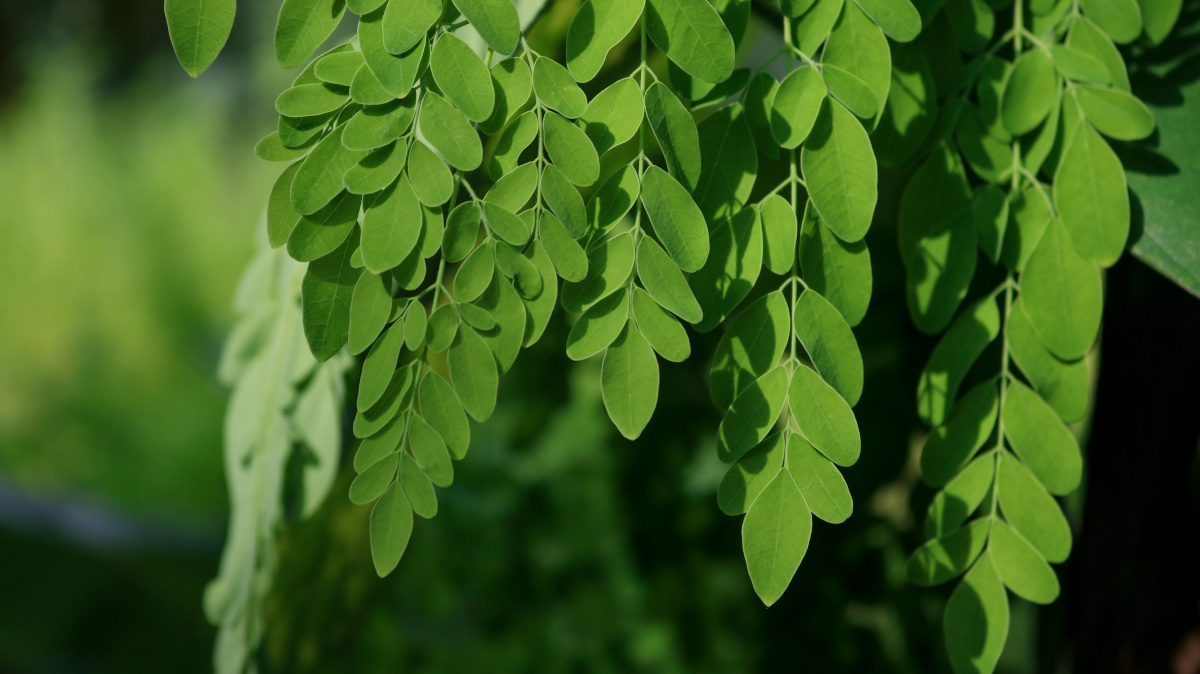
Moringa: the ‘miracle plant’ that helps to maintain normal blood sugar levels
‘Miracle tree’, ‘tree of life’, ‘richness of India’ ... A star plant of Ayurvedic medicine used for centuries in India and Africa, moringa continues to surprise us with its high nutritional value and unique properties
Moringa: a plant used for millennia
Originating from Nepal but now found predominantly in the world’s tropical and sub-tropical regions, moringa (Moringa oleifera) is a fast-growing tree capable of withstanding periods of extreme dryness. Numerous parts of the tree are edible, including the roots, leaves, seeds and flowers.
For thousands of years, moringa has been a feature of Ayurveda, India’s traditional system of medicine, which uses phytotherapy, dietetics, aromatherapy, massage and yoga to rebalance the mind and body. According to Ayurvedic tradition, this plant may help to combat more than 300 health problems.
Studies have also shown its extensive use as a medicinal plant in Nigeria (1). In the various world regions where it grows, moringa is also widely used as a seasoning, vegetable or source of plant protein.
A key solution to malnutrition?
For several years now, moringa has been the subject of a growing number of scientific studies, aimed in particular at identifying its nutritional properties.
According to one carried out in 2011, the dried leaves of moringa contain minerals such as calcium, phosphorus, magnesium and potassium. 17 fatty acids have also been identified, α-linolenic acid (44.57%) having the highest value, followed by heneicosanoic acid (14.41%), g-linolenic acid (0.20%), palmitoleic acid (0.17%) and capric acid (0.07%). It also contains proteins, vitamins, β-carotene, amino acids, and various phenol compounds(2).
In fact, for several years, the World Health Organization and the movement Engineers Without Borders have been supporting programs designed to promote the cultivation of moringa in areas of Africa affected by malnutrition (3-4).
The plant could turn out to be an important resource for the future, not only because of its significant ability to survive dry periods, but also because of its now widely-recognized and exploited nutritional qualities.
Moringa is known to help maintain normal glycaemia
Finally, a number of studies are underway to evaluate moringa’s therapeutic potential. According to one such study: “In addition to its water-purifying powers and high nutritional value, Moringa oleiferais very important for its medicinal value”(5).
Moringa is recognized in particular for helping to maintain normal blood sugar levels(6-7), a property that’s particularly useful over the festive or post-festive period. This is a time when we tend to eat more high-fat, high-sugar foods and consume more alcohol, all of which have a significant effect on our blood sugar levels.
To gain maximum benefit from moringa’s effects, choose a high-quality supplement, made from organically-grown leaves, such as the product Organic Moringa leaf Extract.
References
- G.C. Stevens, K.P. Baiyeri, O. Akinnagbe, Ethno-medicinal and culinary uses of Moringa oleifera Lam ; in Nigeria, Journal of medicinal plants research, 6A27CAA22304 Vol.7(13), pp. 799-804 , April 2013
- Busani Moyo, Patrick J. Masika, Arnold Hugo, Voster Muchenje, Nutritional characterization of Moringa (Moringa oleifera Lam.) leaves, African Journal of Biotechnology Vol. 10(60), pp. 12925-12933, 5 October, 2011, DOI: 10.5897/AJB10.1599
- https://www.who.int/countries/cog/news/plantes_medicinales_sept07/fr/
- https://www.isf-france.org/articles/le-moringa-un-moyen-de-lutte-contre-la-malnutrition-au-togo
- Anwar, F., Latif, S., Ashraf, M. and Gilani, A.H. (2007), Moringa oleifera: a food plant with multiple medicinal uses. Phytother. Res., 21: 17-25. https://doi.org/10.1002/ptr.2023
- C.O. Edoga, O.O. Njoku, E.N. Amadi, J.J. Okeke, Blood sugar lowering effect of moringa oleifera Lam ; in albino rats, International Journal of Science and Technology, Volume 3 n°1, January 2013
- Kumari DJ. 2010. Hypoglycemic effect of Moringa oleifera and Azadirachta indica in type-2 diabetes. Bioscan 5: 211–214.
Keywords
16
Great quality supplements
Great quality supplements! Orders arrive in a timely manner and customer service is all about the customer if there's any issues!! So glad I found this company and refer them all the time to others!
Buyer
20
Excellent supplements
Excellent supplements, clear website with important and useful information for each product (benefits, composition, studies made…) Fast and easy delivery. I have been a customer for year, and still trust Supersmart as the best.
BUISSON Laurence
1 Days
I see clearly now!
Full comprehensive formula.
DOMINIC
1 Days
Fast service good products
Fast service good products
PERCY
2 Days
Great Product ...........
Great Product ............ Fast Service. Thanks Supersmart.
SCOTT Mark
3 Days
Good price & waiting to find out how beneficial the product is.
At this time I can not comment on any medical value of my purchase. I have no medical issues I'm treating so I will have to wait until my next blood test some months away to see just what benefit this product has given me.
El Capt
3 Days
Quality Products
Fast shipping and quality supplements - some that are hard to find. Great selection on the website and usually have discounts.
WadeS
7 Days
Customer service is impeccable
Customer service is impeccable, shipping is almost immediate and best of all quality of products are second to non!
Mohamad Hussein
7 Days
Great fast service.
Great fast service.
Wai Kuen Lee
9 Days
Good service, fast delivery.
I received my order in just a few days. Great service, considering it was sent via USPS!
ABERT Ronald
9 Days
Great quality I noticed the vitamin B1…
Great quality I noticed the vitamin B1 and the Magnesium Complex helps my nerves and helps me go to the bathroom easier
MMA TUBE
11 Days
I'm so glad I found this site!
The ordering experience was a breeze. My choice in the products were mainly of their description which fit very close to what I was looking for. Since I have been using the supplements for a few months now, there is a big difference in the way I feel. I am much more focus. Thank you for providing good quality products that works!
Honyee
13 Days
Very effective high-quality
These are very effective high-quality products. I can feel the difference.
Julee
13 Days
Arrived on time
My product arrived on time and was packaged professionally.
LAURIE CALLAHAN
13 Days
The best
Outstanding products and service
jaygol



